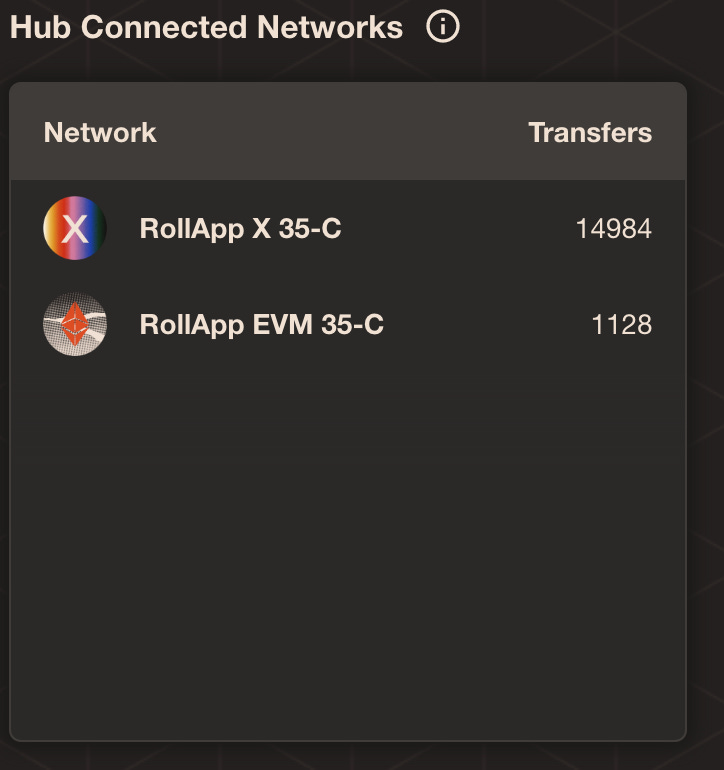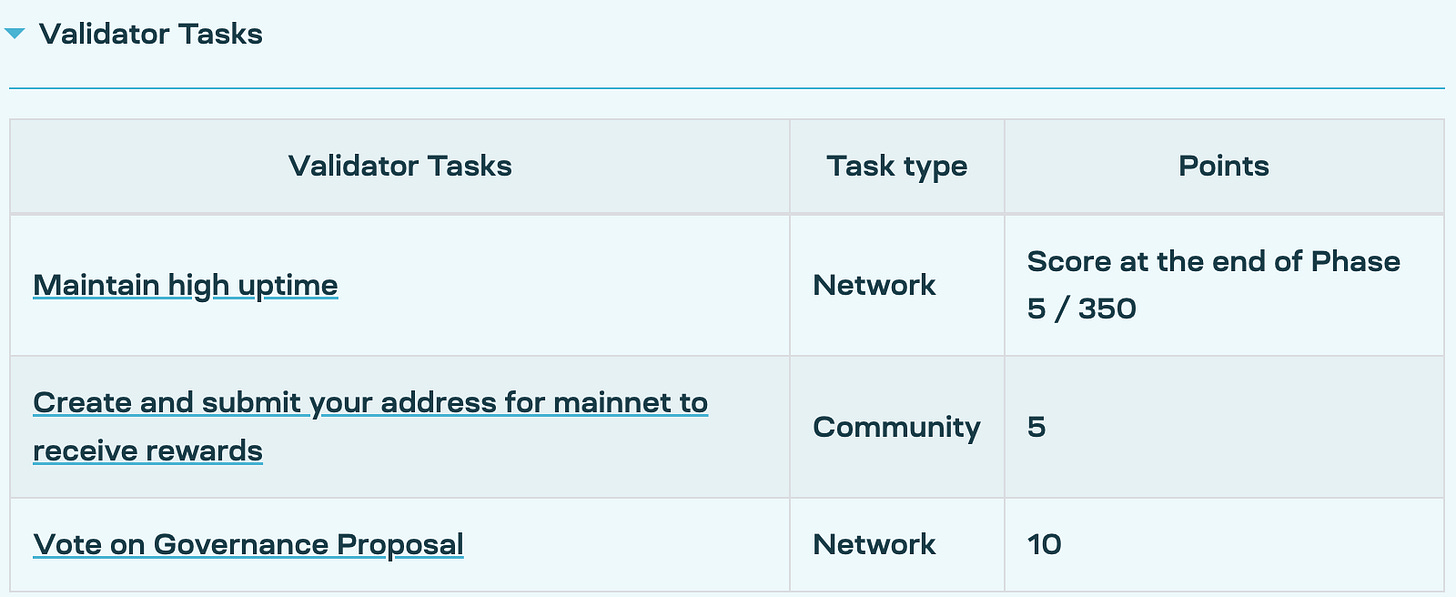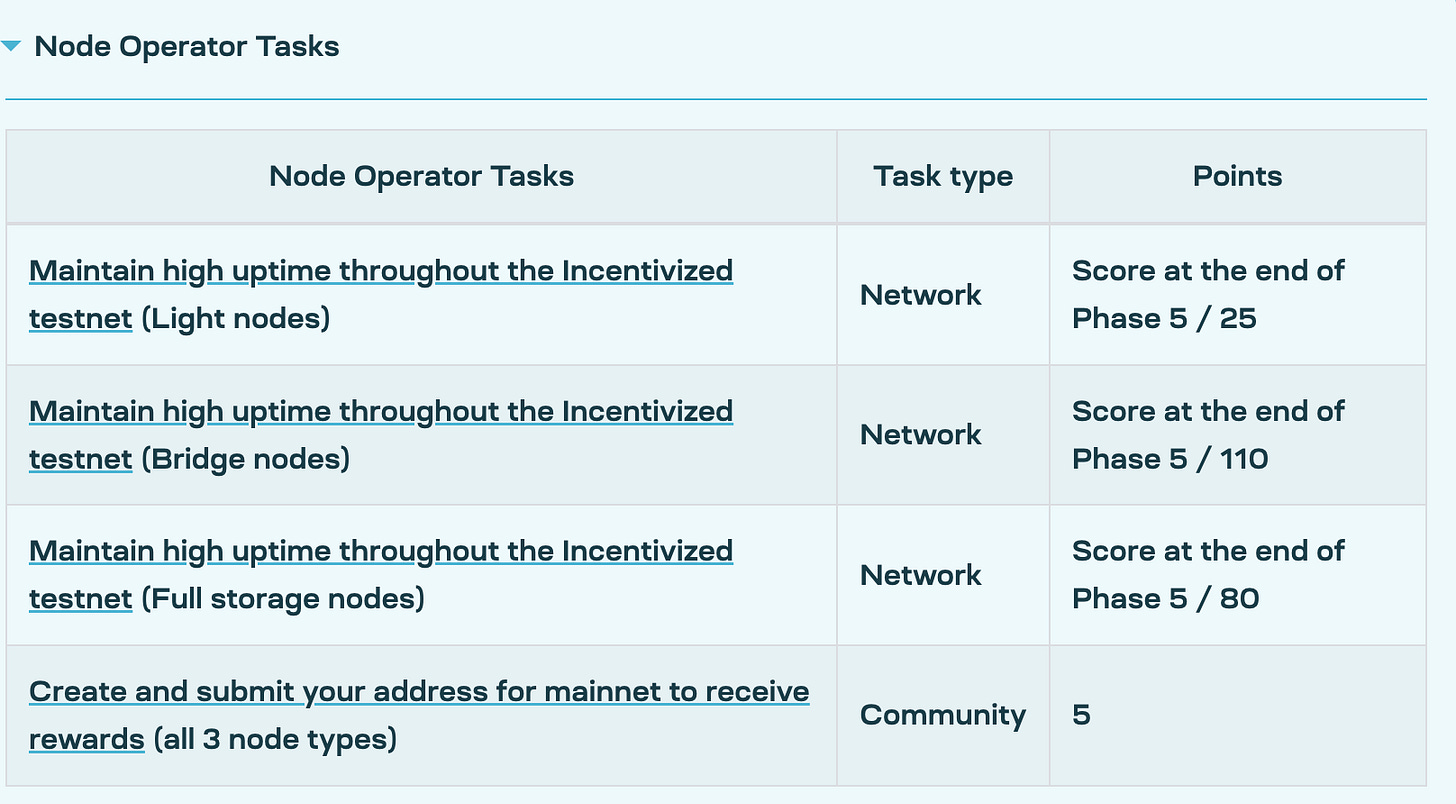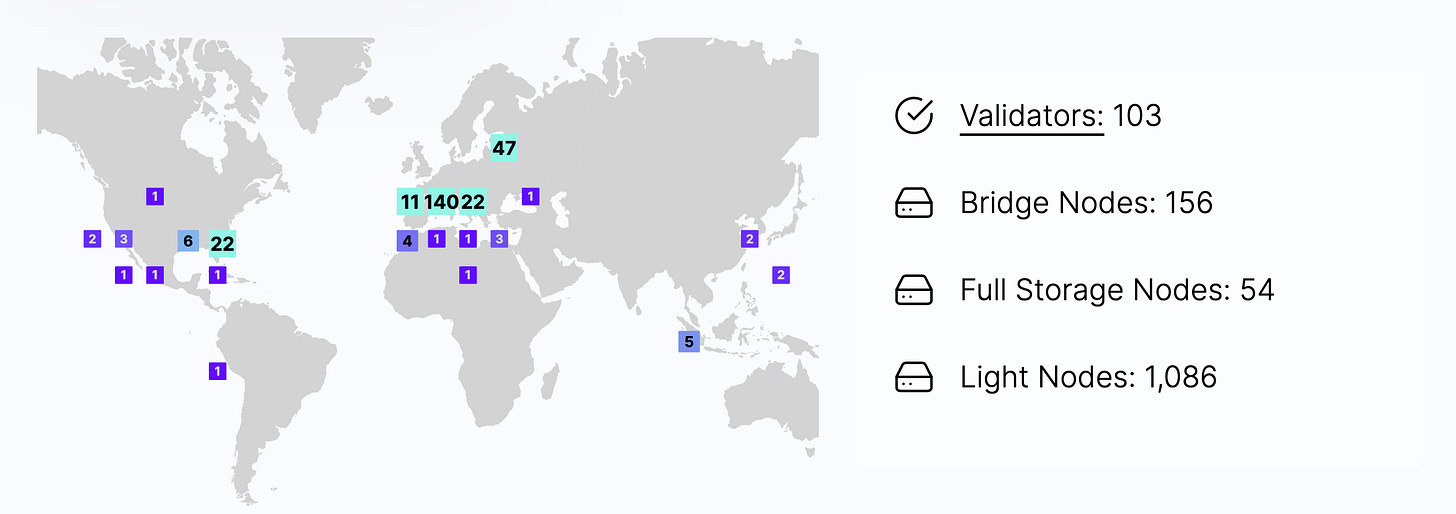Weekly Rollup #12
Introducing Catalyst, The first IBC-enabled EVM Rollup, App-specific Rollup Permissions, ZK Prover DDoS, and much more | Week ending April 28th
Welcome to Modular Media! We cover news, updates, educational content, and more within the modular blockchain ecosystem.
Subscribe to get posts sent directly to your email every week, and follow us on Twitter for modular-related updates!
This week’s issue covers:
📣 News & Announcements
Introducing Catalyst
Last week, Catalyst officially announced itself to the public.
Why Catalyst
If you’ve been following Modular Media for a while now, you may already know that there are many projects working on making rollup deployment as easy as it is deploying a smart contract today.
For this vision to be completely carried out, however, several infrastructure tools/protocols have to be built, from how we index data across a modular ecosystem to how networks communicate with one another, which is what Catalyst focuses on.
What is Catalyst
Catalyst is building a cross-chain liquidity layer for the modular ecosystem. “Catalyst allows any chain to permissionlessly connect liquidity to that of another chain. New chains can automatically transfer to/from any other chain from day one”.
Catalyst uses a “unit of liquidity, " calculated when the user deposits their funds into Catalyst, to solve liquidity fragmentation. In short, this means that we don’t need to have different types of the same token.
Ultimately, Catalyst will add a new module to the modular stack. Developers will be able to leverage this new module in order to connect to any other chain that is also leveraging this Catalyst module.
What’s Next
On the same day as the protocol announcement, the team also announced a $4.2M raise, in a round led by the Spartan Group.
According to Jim, Catalyst founder, the protocol is expected to launch on testnet this summer - you can sign up for the waitlist today to be notified when this occurs. In the meantime, we should be expecting a published whitepaper from the team sometime soon.
Catalyst is building another component for the modular stack. We look forward to seeing the team’s continued development.
Dymension launches the first IBC-enabled EVM Rollup
Last week, Dymension announced the launch of the first ever IBC-enabled EVM RollApp on their 35-C testnet.
What Is Dymension
Dymension is building an IBC-enabled “rollapp” ecosystem. Specifically, Dymension is a proof of stake blockchain that was built using the Cosmos stack. This PoS chain serves as the settlement hub for the entire Dymension ecosystem, and provides all connected rollapps with security, liquidity, and inter-connectivity.
On top of this Dymension hub will be an ecosystem of “rollapps” that will be developed using Dymension’s “Rollup Development Kit” (RDK). This RDK is a set of tools and modules that developers can take advantage of in order to deploy their own rollup - it’s similar to Cosmos’ own SDK framework, except the RDK is more tailored for rollups, as opposed to app-chain.
For those unaware, an application-specific rollup (rollapp) is a rollup dedicated to a specific application (each app is its own dedicated execution environment), rather than a general-purpose rollup, which is built to host a variety of applications. You can learn more about rollapps here if you’re interested.
On February 1st, Dymension launched the first Dymension Rollapp, “RollApp X”, and now, just last week we were introduced to the ecosystem’s second RollApp, the “EVM RollApp” (the RDK allows Dymension to host a variety of virtual machines).
EVM RollApp
According to the Dymension team, “The EVM RollApp utilizes Ethermint (mainly developed by the EVMOS team) on top of Dymension’s RDK”. This will allow developers to deploy their EVM smart contracts, while being able to benefit from all of Dymension’s features, such as IBC-connectivity.
This EVM RollApp will be powered by the EVMOS token (pay for gas with the tEVMOS token). In regards to data availability, “the testnet EVM RollApp will publish data transactions to Celestia’s Mocha testnet and state updates to the Dymension Hub”. Something that makes this EVM rollup different than your traditional EVM rollup is the fact that in Dymension, sequencers produce blocks every 0.2 seconds, providing a faster user experience.
How to start experimenting
Request tokens from the EVMOS faucet
Head over to the Dymension portal and bridge your tokens to the EVM RollApp
Swap between tokens using the recently deployed Uniswap v2 fork on the EVM RollApp
So far, there ave been 1128 transfers to the EVM RollApp:
What’s next
Dymension is expected to launch an incentivized testnet sometime soon, “in which builders will be able to deploy their own RollApps”. Make sure to follow them on Twitter so you can find out when that happens.
AltLayer Integrates the Arbitrum Network
Last week, AltLayer announced the integration of the Arbitrum network as an additional base layer option for developers building using the AltLayer platform.
What is AltLayer
As you may already know, several teams are developing solutions to make rollup deployment as easy as launching your own smart contract today.
There are two popular approaches teams are going about this, Rollup SDKs (Dymension, Rollkit, etc.), and RaaS providers (AltLayer, Caldera, etc.).
AltLayer is a RaaS provider. More specify, AltLayer provides a dashboard that allows developers to build their own disposable, optimistic rollups, or as they refer to them, “Flash Layers”, in just minutes.
What does this integration mean?
When building your own rollup with AltLayer, you get to add different features for your own specific use case. One of the customizations you can add to your rollup is the base layer, also known as the settlement layer here.
Up until last week, the only options developers had for a base layer included Ethereum, Polygon, and BSC, but now, developers also have Arbitrum as an option.
The base (settlement) layer is in charge of verifying and passing proofs, and ultimately provides security to the rollup. If you choose Ethereum as your base layer, you rely on the Ethereum validators to ensure everything on your AltLayer rollup is running correctly. Furthermore, transactions on the rollup are not considered final until the block reaches consensus on the base layer. If you choose Arbitrum as the base layer for the rollup, then your relying on the validators from this network.
AltLayer x Arbitrum Orbit
Last month, the Arbitrum Foundation announced the launch of Arbitrum Orbit, a permissionless solution that allows developers to launch their own L3 rollup using the Arbitrum technology. This solution is meant to provide a way to quickly launch new Arbitrum chains, ultimately expanding the ecosystem of the network. One of the cool things about Orbit is that it comes with support for Stylus from day one - which supports more C+ and Rust programming languages, as opposed to just Solidity.
With this integration, developers will be able to use AltLayer’s no-code dashboard to deploy their own dedicated L3 rollup that settles on Arbitrum. Specifically, Arbitrum Orbit will be supported within the Altlayer launchpad. One of the benefits for end-users is that Arbitrum native users will be able to bridge to the AltLayer rollup directly from Arbitrum (if the deployer chooses to add Arbtitrum as an option of course).
What’s next?
Users are able to deploy their own Arbitrum-secured L3 starting today. Best of all is that for now, the no-code rollup launchpad is open to all for a free trial.
You can visit their website to learn how you can get started today.
Blockspace Race phase 4 begins
Last week, Celestia announced the start of Phase 4 of the blockspace race, the network’s first incentivized testnet.
What is the Blockspace Race
The Blockspace Race is Celestia’s first incentivized testnet program, launched in five different phases spanning nine weeks total.
During this event, each participant will run their own node (one node per participant), and there will be different tasks that the nodes can accomplish during each phase. Each task corresponds with a certain node type (validator node, bridge node, etc.), and the node participants receive points for completing these tasks. Celestia will be allocating 15M TIA tokens as rewards for participants for their service. Once Celestia reaches mainnet, the testnet participants will be able to claim their token rewards.
Phase 4 Details
During phase 4, participants will be able to vote on a proposal to extend the blockspace race, or the length of this testnet.
Aside from this, here are the new tasks validators and nodes can look forward to:
New validator tasks that have been added:
& here are the new node operator tasks:
Numbers so far
Here are the numbers so far, as of may 1st:
Still at over 1K light nodes!
Congrats again to the Celestia team for the current success throughout this Blockspace Race.
More News & Announcements
“Introducing Omni Network, an interoperability network for Ethereum, secured by Ethereum thanks to Eigen Layer”.
Caldera’s testnet faucet has temporarily been disabled due to spam
Sovereign Labs team just posted a new update log, this time featuring a new bank module, RPC Support, a sequencer module, and more.
AltLayer announces FlashGPT v2, featuring enhanced UI and increased robustness. “Users can direct this powerful ’Siri-like’ assistant tool to deploy and customize their rollups and contracts in minutes.”
Circle’s cross chain transfer protocol is now live on mainnet with Hyperlane as a launch partner, amongst other protocols
Three new projects have deployed on zkSync Era: Layer Zero, Beefy Finance, Tevaera (on-chain gaming), and Woofi (DEX).
The full distribution of the Arbitrum DAO airdrop took place on Tuesday
Vertex (orderbook-AMM DEX) is now live on Arbitrum mainnet.
Cashmere Labs, “a protocol for MEV protected cross-chain swaps” built on Layer Zero, is live on public testnet
“Introducing the Superchain Token List, a unified token list for the Optimism ecosystem”
The voting cycle for Season 4 of Optimism’s protocol delegation program begins
The OP-Labs team published this page which will serve as “the source of truth” for upgrades and everything else related to Optimism Bedrock
Symbiosis, a cross-chain engine and liquidity protocol, is integrating Scroll into their testnet
Introducing Spark, a UTXO order book on Fuel
Fluid protocol, the native stablecoin protocol on Fuel, gets a new look
New performance upgrades have been added to Fuel’s Beta-3 testnet.
Optimism, Scroll, and Fuel will be amongst some of the protocols that will be putting up funds for the upcoming ETHGlobal Lisbon hackathon event.
XBorg, a gaming data and application network, as well as Yooldo, are integrating with Mantle’s L2 network.
The second wave of Aztec grants is live: “The focus for this wave is funding developers within the Noir ecosystem”.
The StarkWare team just published their 2023 goals & roadmap. Here’s a TLDR from @LordSecretive.
Brine Finance launches on StarkEx: “an order book DEX that provides a superior permissionless trading experience”
Introducing StarkEye, a StarkNet address monitoring tool
Introducing StarkFighter, a new community campaign. “A mini-game challenge to discover Starknet and compete for over $12,000 in prizes. Climb to the top ranks of the Leaderboard to win ETH and NFTs”
Two projects add support for Polygon zkEVM: LayerZero, and Bungee.
The Polygon team has added some UX changes to the zkEVM bridge
You can now track all of your Polygon zkEVM assets on CoinStats
Google Cloud announces the “web3 startup program”, featuring up to $200K in cloud credits and other benefits.
📚 Discourse & Education
Do app-specific rollups have permissionless deployment?
Alana Levin from Variant Fund poses the question and a thought experiment: Could Blur deploy on a (hypothetical) OpenSea L2 and undercut OpenSea’s business?
This, of course, would be problematic.
However, folks from OpenSea, AltLayer and Coinbase clarify that it’s likely a non-issue, as app-specific rollups can implement different degrees of permissionlessness based on the best interest of their projects.
Emo from OpenSea says this can be accomplished in several ways. Custom execution clients can forbid deployments and centralized sequencers can also ignore transactions they don’t like. However, some rollups limit their own control over the latter with forced inclusion mechanisms (e.g. seen in Arbitrum and OP Stack).
YG from AltLayer also points to several options. Customized logic can be done at the protocol or precompile level. Examples include whitelisted contract deployments and restricted contract calls (e.g. seen in StarkWare and AltLayer).
Viktor from Coinbase puts it simply. Your chain, your rules.
Can provers get DDoSed?
@Madhav_goyal_ from Superteam DAO asks if centralized proof production is a DDoS risk. DDoS stands for distributed denial of service attack, and are “typically accomplished by flooding the targeted machine or resource with superfluous requests in an attempt to overload systems and prevent some or all legitimate requests from being fulfilled.”
You can intuit how centralized systems might be at higher risk of this, especially when the entities are public. Of course, centralized systems are also at risk of less malicious but similarly problematic things like downtime.
So is this a problem?
TLDR: Practically, so far, yes. But it doesn’t need to be.
It’s quite possible to build rollup systems in ways that preserve full liveness in the event of a DDoS attack. Dubbelosix does a good job illustrating how the mechanisms could work. From first principles, there’s no reason full nodes must be reliant upon ZK proofs for state validity, when they are downloading and executing blocks themselves.
However, the reality for many rollups is different, and the above only works if full transaction data is published to the base layer - the rollup full nodes need to fetch the data somehow.
Why might ZK rollups like Starknet choose against publishing full transaction data? Because publishing state diffs is cheaper. As usual, it’s a matter of tradeoffs, and we’re seeing ZK rollups try both approaches. TBD which approach provides better tradeoffs for different use cases - the market will decide.
To learn more about this tradeoff space in particular, here’s a highly recommended post.
More Discourse & Education
Celestia releases an episode discussing “MEV in the modular stack” with builders from Skip Protocol, Duality and Astria 🎙️🔥
Bell Curve releases an episode discussing “The MEV Searcher Business Model” with @DeanEigenmann and @_anishagnihotri 🎙️
@nuss_eli writes an article deep diving into the execution layer landscape, including helpful diagrams and explanations for different points along the tradeoff space ✍️💎
@yuxiao_deng summarizes the recent MEVconomics conference 💬
Figment Capital (@tracecrypto1) writes an article on “Accelerating Zero-Knowledge Proofs” ✍️🧠
@jon_charb writes an article exploring SUAVE and shared sequencers ✍️
@barnabemonnot presents “Ethereum: Designing the infinite economic machine” at NYU’s FIntech Conference and introduces the concept of “verification throughput” 🖼️
Worldcoin hosts a Twitter Space discussing all things ZKML with Daniel from Modulus Labs and Jason from ZKonduit 🎙️💎
Paradigm (@gakonst) writes an article exploring the interplay between MEV-Boost and Ethereum PoS consensus ✍️🧠
@nero_eth summarizes Paradigm’s article on PBS and how it impacts the fork choice rule 💬
a16z (@eddylazzarin) writes an article breaking down data availability sampling and danksharding, giving an overview and proposing improvements ✍️
@apolynya writes an article with updated perspectives on “Monolithic blockchains and breaking free” ✍️
@NickDGarcia highlights Q1 2023 metrics and activity for Polygon zkEVM 📊
@nickwh8te explains the “shared sequencers paradox” and how it’s a better approach to capture inter-rollup MEV 💬
@christine_dkim writes an article exploring Flashbots MEV-Share ✍️
@apolynya highlights solutions for forced inclusion when transactions are “stuck” in a rollup smart contract 💬
@nickwh8te summarizes permissionless interoperability and why it’s the missing layer of the modular stack 💬
Fuel Labs hosts a Twitter Space discussing parallelism on Ethereum and how Spark will leverage the UTXO model to enable parallel order matching 🎙️
@odin_free curates resources on why you should learn Cairo 1.0 and where you can start 💬
Obol Labs writes an article exploring use cases of DVT within Cosmos ✍️
CoinPost Global hosts a Twitter Space discussing the state of monolithic vs. modular blockchains, deploying your own blockchain, and Bitcoin rollups with Nick from Celestia 🎙️
@0xTaker writes an article exploring MEV latencies ✍️
Pessimism and @musalbas discuss how “pessimistic rollups” work 💬
@dankrad explains how escape hatches guarantee rollup censorship resistance and how there are ways to ensure affordable escape hatches 💬
@LoganJastremski releases an episode discussing the core bottlenecks of scaling ZK tech with Avihu from StarkWare and Omar from Matter Labs 🎙️
Zero Knowledge Podcast releases an episode discussing the “History of Plonk, Noir, and the building of Aztec 3” with Zac from Aztec 🎙️
@apolynya explains how most rollup teams plan to address the current admin key vulnerabilities, ranging from timelocks to ossification 💬
Ether.fi hosts a Twitter Space discussing “The Future of Ethereum with EigenLayer” with Sreeram from EigenLayer 🎙️
@HouseofChimera hosts a Twitter Space discussing all things Cartesi 🎙️
Avail breaks down the flow of rollup transactions in simple terms 💬
@saniyamore breaks down the Sovereign SDK and its benefits 💬
Earnifi explains how to become an early EigenLayer user and join the Ethereum Restaking Collective 💬
That's all for this week! Thanks for reading 🧱🎬
If you found this useful, please like and retweet this tweet so more people can see it 🙏










Well done! As always 👏
Thanks lads